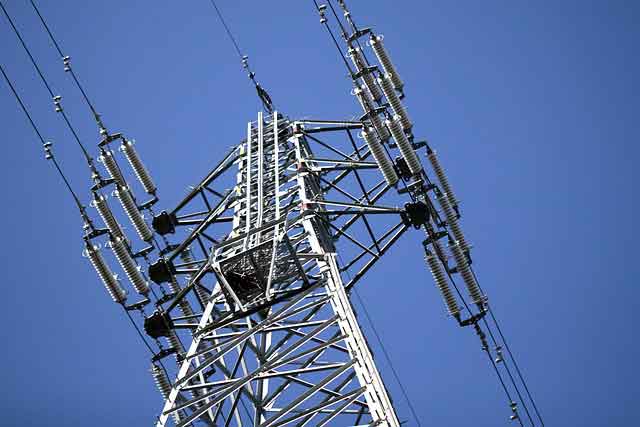Geothermal: the heat beneath our feet
Could there be a better time to revisit Los Alamos National Laboratory's one-of-a-kind, hot dry rock geothermal experiment? Could LANL's Fenton Hill project be one of the answers demanded by uncertain times?
Certainly Don Brown thinks so, Los Alamos County's resident advocate for what he calls "the heat beneath our feet."
Now retired and a guest scientist at the lab, Brown is one of the veterans of the Fenton Hill Project who never gave up. Now he has his eyes on funds available under DOE's advanced research project, known as ARPA-E.
"We are an answer to a maiden's prayer," he said. "We're just waiting for somebody to find us. I'm like a teenager waiting at the phone for a prom date."
In fact things are heating up again in a number of directions.
Recently, according to The Associated Press, the Department of Energy put one of its high profile geothermal projects on hold until more study could determine whether the drilling could produce earthquakes.
The project by start-up company AltaRock Energy has attracted investors including Google and Kleiner Perkins Caufield & Byers, according to reports. In 2006 and 2007, earthquakes in Switzerland were linked to a similar technique, known as EGS, or Enhanced Geothermal Systems.
Unlike the hot dry rock approach, which pumps water into hot rocks in a closed system, EGS attempts to exploit natural hydrothermal systems by adding pressure, or stimulating the hydrology.
The DOE closed out its geothermal projects in 2007 in favor of other renewables, namely biomass, solar and hydrogen.
In 2008 and 2009, DOE returned to geothermal, as the project Web site notes, and its Geothermal Technologies Project's research and development for this year is focusing activities and funding on enhanced geothermal systems.
"One issue has come up and we've addressed it," said Brown. "That is the seismic risk. An experiment called EGS in Basel, Switzerland, pumped high pressure into a fault system. With HDR (hot dry rock), you avoid faults because it's a closed system."
Brown gave a paper earlier this year at the 34th Workshop on Geothermal Reservoir Engineering at Stanford University on "Hot Dry Rock Geothermal Energy: Important Lessons from Fenton Hill." Brown is now the chief technical officer of a local startup company, HDR Energy LLC. The first step of its business plan is to reopen Fenton Hill.
"The well bores that were plugged and abandoned can be reopened and cleaned out," Brown said. "The site could be reoccupied. We could pick up our work where we were in '95" when the project closed.
Because much of the drilling and infrastructure already exists at Fenton Hill, Brown thinks 4 to 6 cents a kilowatt hour is a reasonable goal for 3 to 6 megawatts electrical generation capacity at the site.
The company has submitted its concept paper to ARPA-E.
The agency has received about 3,500 preliminary applications for $150 million worth of grants available. After narrowing the field, the next round of proposals will be due by the end of August.
Under the HDR Energy plan, a relatively simple process of replumbing two wells could enable the revived Fenton Hill project to do a comprehensive flow test of the reservoir to demonstrate its thermal power production.
Other potential hurdles for production include permits from the U.S. Forest Service, which would entail legislative amendments for the Jemez Recreation Area.
With results that are positive enough to attract investors and the necessary approvals, Brown said, the plant could be up and running in 8 to 10 months, a relatively short time in the world of power plants.
Ken Rehfeldt, leader of LANL's geophysics group, said the laboratory learned a lot from Brown's work. Because the current project is a commercial venture, they can't promote it, but also won't hinder the project.
"My role is to try to promote the science side of this," he said. "We're aware of what Don is doing. If we can help in any way with the imaging of the subsurface, for example, we can bring that science to bear."
The Geothermal Energy Association estimates the heat continuously flowing from the Earth's interior is equivalent to 42 million megawatts of power, and is expected to remain so for billions of years to come, "ensuring an inexhaustible supply of energy."
Most of that is too deep to extract, but the western third of the United States has this country's most accessible geothermal resources.
A 2007 report by the Massachusetts Institute of Technology, "The Future of Geothermal Energy," estimated energy potential from geothermal sources to be about 2,000 years worth of U.S. energy consumption, using "reasonable assumptions."
Rep. Jeannette Wallace, R-Los Alamos, sponsored a joint memorial that passed the Legislature this year calling for "the reopening and redevelopment of the hot dry rock energy production facility," along with an amendment to federal law to permit geothermal leasing within the Jemez National Recreation Area.
Related News

Alberta's Rising Electricity Prices
CALGARY - Alberta’s electricity market is facing growing instability, with rising prices leaving many consumers struggling. The province's "last resort" rate, a government-set price for people who haven’t chosen a fixed electricity plan, has become a significant concern. Due to volatile market conditions, this rate has surged, causing financial strain for households. Experts, like energy policy analyst Blake Shaffer, argue that the current market structure needs reform. They suggest creating more stability in pricing, ensuring better protection for consumers against unexpected price spikes, and addressing the flaws that lead to market volatility.
As electricity prices climb, many consumers are feeling…




